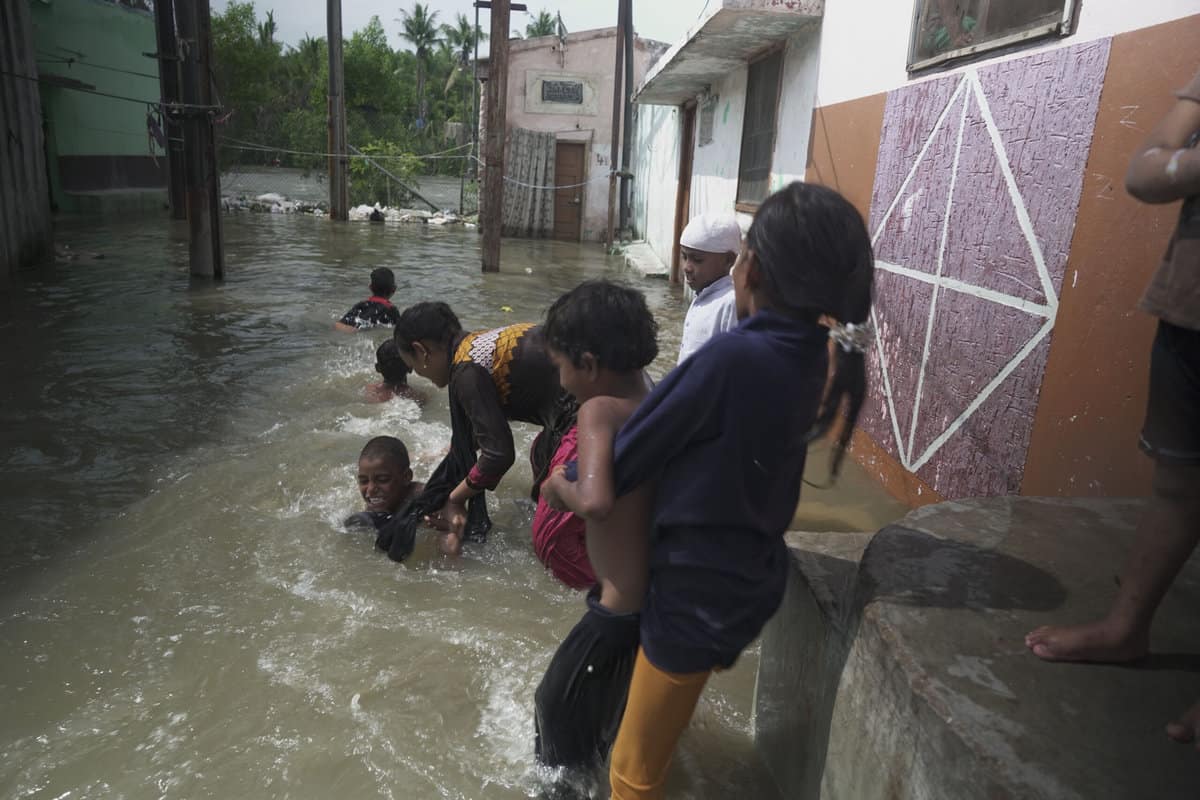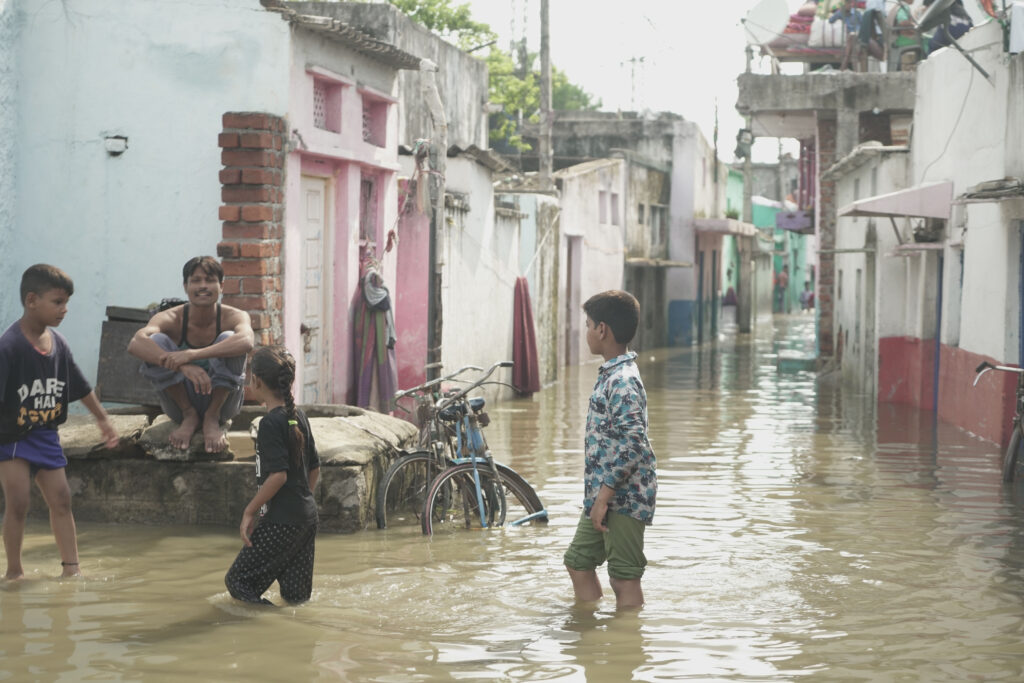
Osman Sagar and Himayat Sagar talaabs or lakes were completed in 1920 and 1927 respectively. While Osman Sagar completed a century of its service, Himayat Sagar will reach the milestone in another 5 years. These two reservoirs designed to prevent floods in Hyderabad have stood the test of times in the last 100 years. The genius of the then city policymakers and engineers can be gauged from the fact that even in the extreme weather event in July, 2022, these two reservoirs stemmed the huge flows from the catchment area caused by sudden, large, excess, heavy rainfall in River Musi catchment area.
Following the downpour, the state government on 26th July sounded high alert. On this day, 8 of the 15 gates of Osman Sagar and 6 of the total 17 gates of Himayat Sagar reservoirs were opened. It was reported that the increased inflows in the twin reservoirs are a result of rainfall in their catchment areas. Vikarabad district recorded about 13cm of overnight rainfall. Neighbouring districts of Sangareddy, Rangareddy, Siddipet, and Yadadri Bhuvanagiri have all reported over 10cm of rainfall in isolated locations.
Within Vikarabad district, Telangana State Development Planning Society (TSDPS) reported large excess rainfall in Mominpet, Pudur, Bomraspeta, Dharur, Kotepally, Bantwaram, Peddemul, Basheerabad. Excess rainfall in Marpalle, Nawabpet, Kulkacherla, Doma, Kodangal and Doulathabad. Only 4 mandals, Pargi, Tandur, Yelal and Choudapur reported normal rainfall, out of 19 mandals in this district. In Rangareddy district, all west mandals form part of the catchment area of the twin reservoirs, especially Himayat Sagar. Entire district reported large excess rainfall, with the highest in Chevella mandal. In Shamshabad, Shankarpalle, Moinabad, Farooqnagar, Jillela Chowdergudem, Kondurg, Shabad, Gandipet and Rajendranagar mandals rainfall exceeded the normal. While the precipitation was huge, on ground rainflows simply became voluminous as the flows shifted from primary to secondary streams and to the feeder channels.

Usually, these twin reservoirs with a total capacity of about 7 TMC take years to fill up completely. Morphological studies indicate the catchment area of these reservoirs do not generate runoff soon, because of lower value of drainage density, stream frequency and highly permeable subsoil. Notwithstanding the fact that the rainfall was unprecedented and excessive, the biggest concern is how the runoffs have reached the twin reservoirs within a short span of time. The time difference between the actual rainfall and the inflows into the reservoirs was minimal. Some newspapers reported overnight rainfall reached Osman Sagar in a matter of hours. Distance between Marpalle and Osman Sagar is 67 km. And, from Mominpet, where large excess rainfall was reported, it is 53 km.
As per HMWSSB on July 1st stored water in both the reservoirs was 5.312 TMC. By 6th of July it came down to 5.296 TMC. On 13th July, total stored water in the reservoirs 5.384 TMC, even though there were large excess rainfall in both Rangareddy and Vikarabad districts. On 20th July and 27th July, 2022, it was 5.478 and 6.418 TMC respectively. However, on 26th July, 8 gates in Osman Sagar and 6 gates of Himayat Sagar were opened. This resulted in full flood flow in River Musi downstream, as visuals and the inundation was recorded. As per data released by Indian Meteorological department, weekly departures district-wise in July, shows that 13th July the departure was very high at 252 and 251 for Rangareddy and Vikarabad districts. By 20th July, this departure was negative at -22 and -18 respectively. However, by 27th July, this departure showed a spike of 173 and 108 for the respective districts.
Floods in Hyderabad downstream of these twin reservoirs were visible and enormous on 26th July, and not in the week ending 13th July, wherein the rainfall was larger. This contradictory situation needs explanation. Normally, for any reservoir floods are defined by the storage levels and the inflows. If the inflows are steady and higher, outflow of water is allowed by lifting the gates, even while the peak storage levels are maintained. For the twin reservoirs, storage level was 5.384 on 13th July, when the rainfall was heavier. On 27th July, storage level was 6.418 when the rainfall was lower than earlier episode. With higher rainfall, inflows should have been higher in 2nd week of July than in 3rd week of July. In entire July, storage levels of the twin reservoirs never peaked to the storage capacity. Yet, gates were opened before the full capacity enabling higher outflows in 3rd week of July, than in 2nd week of July.
As alleged by Dr. Lubna Sarwath, there is heavy data fudging by HMWSSB. Inflows from the rainfall in 2nd week of July increased the storage levels in the reservoirs. In 3rd week of July, HMWSSB lifted the gates to enable outflow, expecting adverse backwater effect on the encroachments, high-end residential areas and unauthorized layouts in the 10 km radius. By doing so, it has compromised the safety of poor housing colonies along the Musi River.
In 2021, on 22nd July, 2 gates of Osman Sagar and 5 gates of Himayat Sagar were lifted to prevent flooding of constructed area, upstream of the reservoirs. Again, on 4th September, 2021, 4 gates of Osman Sagar were lifted. Earlier, in October, 2020, 13 gates of Himayat Sagar had to be lifted to release 15,000 cusecs of flood water.
Another baffling factor is that the catchment area of Himayat Sagar is bigger than Osman Sagar. Rainfall in Rangareddy district mandals which fall in the catchment area of Himayat Sagar received higher rainfall than in Vikarabad district, which largely falls in the catchment area of Osman Sagar. However, in recent years, gates of Osman Sagar are being lifted more frequently and at a higher height than Himayat Sagar. This also indicates that a full tank level Osman Sagar is hurting the influential more than FTL of Himayat Sagar. Gandipet reservoir capacity is decreasing with encroachments. With heavy rainfall, destruction of watershed and streams in the catchment area, loss of soil strata, destruction of hillocks, devegetation and deforestation, inflows into Osman Sagar are likely to increase. With the number of extreme weather events likely to increase, management of twin reservoirs needs to be more professional, following principles of water management, equity and justice.
In 2020, Shankarnagar, Kamal Nagar, Moosa Nagar and other localities were flooded near Chaderghat Bridge. Residents did not receive compensation. In Shankarnagar alone, some 25 houses were listed as completely damaged by the Revenue Department. In these 3 years, these poor households were flooded 4 to 5 times. The reason does not entirely lie on heavy rainfall. There is a fair bit of unfair management by HMWSSB which is protecting the rich and influential in the catchment areas of Osman Sagar and Himayat Sagar, at the cost of the poor and vulnerable sections downstream. It is also alleged that these residents did not receive advance warning from the authorities, earlier and this year as well. Visuals and photos on the social media show that the residents had to evacuate themselves, often dangerously.
Most Hyderabadis do not have sympathy for encroachers of Musi River. But then the iconic twin reservoirs are under encroachment, with active connivance of the regulators. These two reservoirs were constructed to prevent floods to Hyderabad, in order to save them from tragedy and penury. But the reservoirs management seems to be following a policy of favouring the rich encroachers, while being unsparing of the poor. Management of these reservoirs need to be transparent and participatory. Government should develop guidelines and protocol to protect the reservoirs as means to control floods and also to protect people from floods.
Dr Narasimha Reddy Donthi is a public policy expert. He can be reached at nreddy.donthi20@gmail.com.



